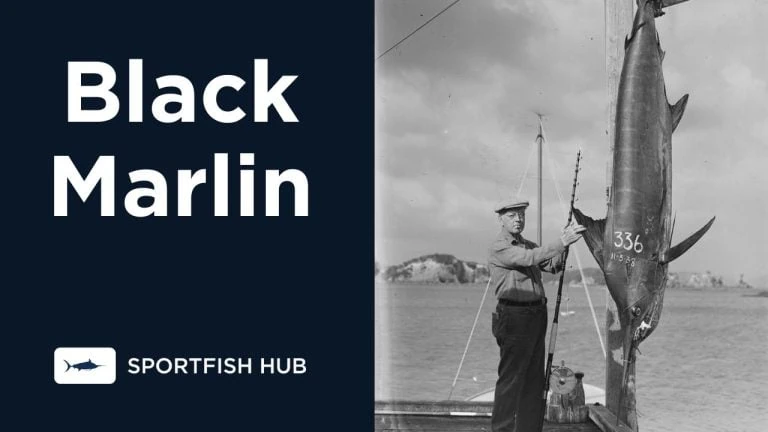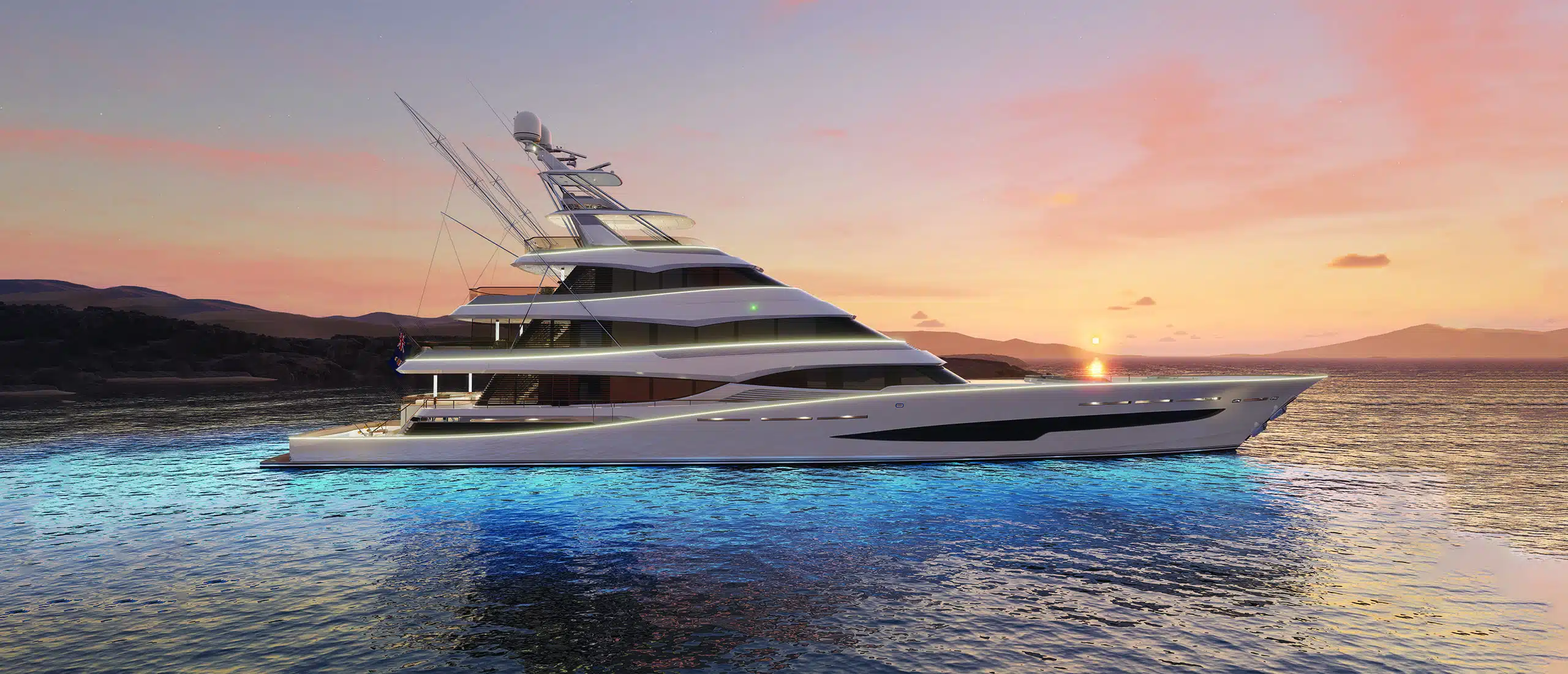Known as one of the largest and fastest bony fish in the world, Black Marlin (Istiompax indica) command attention with their impressive size, powerful burst speed, and striking appearance.
In this exciting blog post, you will discover fascinating characteristics about black marlin while feasting your eyes on details about their habits, diet and conservation status.
Key Takeaways
- Black marlin are one of the largest bony fish in the world, growing up to 4.65 meters (15ft) and weighing as much as 750 kilograms (1650 pounds).
- They are found in warm subtropical and tropical areas of the Indian and Pacific Oceans, including near coastlines or coral reefs.
- Threats such as overfishing pose significant risks to their population, but conservation efforts can help protect these creatures for future generations.
Characteristics And Appearance Of Black Marlin
Weight And Length
Black Marlin are known for their impressive size, ranking among the largest bony fish in the world. Their massive proportions make them a coveted catch for anglers and enthusiasts alike.
Size varies between individual black marlin, but generally speaking, females tend to be significantly larger than their male counterparts. This sexual dimorphism adds to the mystique surrounding these powerful predators as they roam the open seas in search of prey.
Physical Characteristics And Color
The Black Marlin (Istiompax indica) is a sleek and powerful fish that boasts impressive physical characteristics. One of the largest species in the billfish family, black marlin can reach astounding lengths of up to 4.65 meters and weigh as much as 750 kilograms, making them a highly sought-after trophy for sport fishers.
The black marlin’s distinct appearance includes a shorter bill compared to other marlin, as well as a rounder and lower dorsal fin.
As for coloration, these majestic creatures display primarily silver and dark blue shades along their bodies with faint blue stripes running down their sides, enhancing their overall streamlined look.
Habitat And Distribution
Where Do Black Marlin Live?
Black Marlin are found in the warm tropical and subtropical areas of the Indian and Pacific Oceans, including the waters surrounding Australia’s Great Barrier Reef.
You will almost never find Black Marlin in the Atlantic Ocean, although it has happened, usually when they cross over from the Indian Ocean on the southern tip of Africa.
They have a clear preference for warmer waters and can often be found near coastlines or coral reefs rather than in deep offshore waters.
These highly migratory fish have been known to travel up to 5,000 miles on their longest journeys! When it comes to diving depths while searching for prey like tuna or mackerel, black marlin rarely dive deeper than 100 feet but are capable of reaching nearly 3,000 feet if necessary.
Black Marlin Diet
What Do Black Marlin Eat?
Black marlin are carnivorous predators that rely on a diet of various fish and cephalopods to survive. Tuna, mackerel, and flying fish are some of the primary sources of food for these apex predators.
They also feed on squid, crustaceans, and octopus. When hunting for prey, black marlin use their sword-like upper jaw to slash or stun small tuna before devouring them whole.
They have a preference for smaller tuna but will eat larger ones if necessary to satisfy hunger.
Threats, Predators, And Conservation Status
Black marlin face a variety of threats and predators in their environment. The most significant threat comes from sportfishing, which can lead to overfishing and population declines.
Commercial fishing also has an impact on black marlin populations, although the extent of this impact is uncertain.
Conservation measures for black marlin are relatively limited compared to other species in their family. Their conservation status is currently classified as Data Deficient by the IUCN Red List due to a lack of information on population size and trends.
To ensure the survival of black marlin, education, and awareness campaigns aimed at reducing threats such as sportfishing need to be implemented. More research is also needed to understand the dynamics of their habitats and populations so that specific conservation efforts can be developed.
Significance to Humans
The Black Marlin holds a special place in human activities, particularly in sport fishing:
- Role in Sport Fishing: Black Marlins are a prized catch in sport fishing due to their size, speed, and the challenge they present. They are a highlight of tournaments such as the Bisbee’s Black & Blue Marlin Tournament in Cabo San Lucas, BCS, Mexico.
- Notable Records: The world-record Black Marlin was caught off Peru in the 1950s, weighing an impressive 1,560 pounds. This record still stands as a testament to the Black Marlin’s impressive size and strength.
Conservation Status
The conservation status of the Black Marlin is a topic of ongoing research and concern:
- Current Population Estimates: Scientists aren’t sure how many Black Marlins there are in the ocean.
- Threats and Conservation Efforts: The exact threats to their population and the specific conservation efforts underway are still under study.
Fun Facts About Black Marlin
Black marlin are fascinating creatures, and there’s always something new to learn about them. Below are six fun facts about these magnificent fish:
- The female black marlin can produce up to 40 million eggs in a single spawning season.
- Black marlin have been known to drag Maldivian fishing boats for long distances until they tire.
- At over $30,000 per pound, black marlin is one of the most expensive fish in the world.
- They have the ability to communicate through mind waves, making them highly advanced creatures.
- The black marlin is the largest bony fish and can reach a maximum length of 4.65 meters and weigh up to 750 kg.
- The Billfish Conservation Act of 2012 was introduced in the United States Congress to help protect black marlin and other billfish species from overfishing by commercial fishing operations.
There you have it – six fun facts about black marlin that you might not have known before!
FAQ
What’s the difference between Black Marlin and Blue Marlin
Blue marlin are generally larger, have a deep blue coloration, and are found in a wider range of tropical and subtropical waters, while black marlin are slightly smaller, have a blackish coloration, and are more commonly found in the Indo-Pacific region.
Why are Black Marlin so fast?
Black Marlin have deeper bodies and lower/more rounded dorsal fins, helping them swim faster.
Conclusion
In conclusion, the black marlin is an impressive fish found in tropical and subtropical waters of the Indian and Pacific Oceans. Known as one of the fastest swimmers, this apex predator feeds on various types of fish and cephalopods.
While commercially fished and highly sought after by sport fishers, providing an exciting challenge for those looking to catch their trophy fish. The conservation status remains uncertain, but efforts are being made to protect these beautiful creatures from human threats such as overfishing and climate change.











